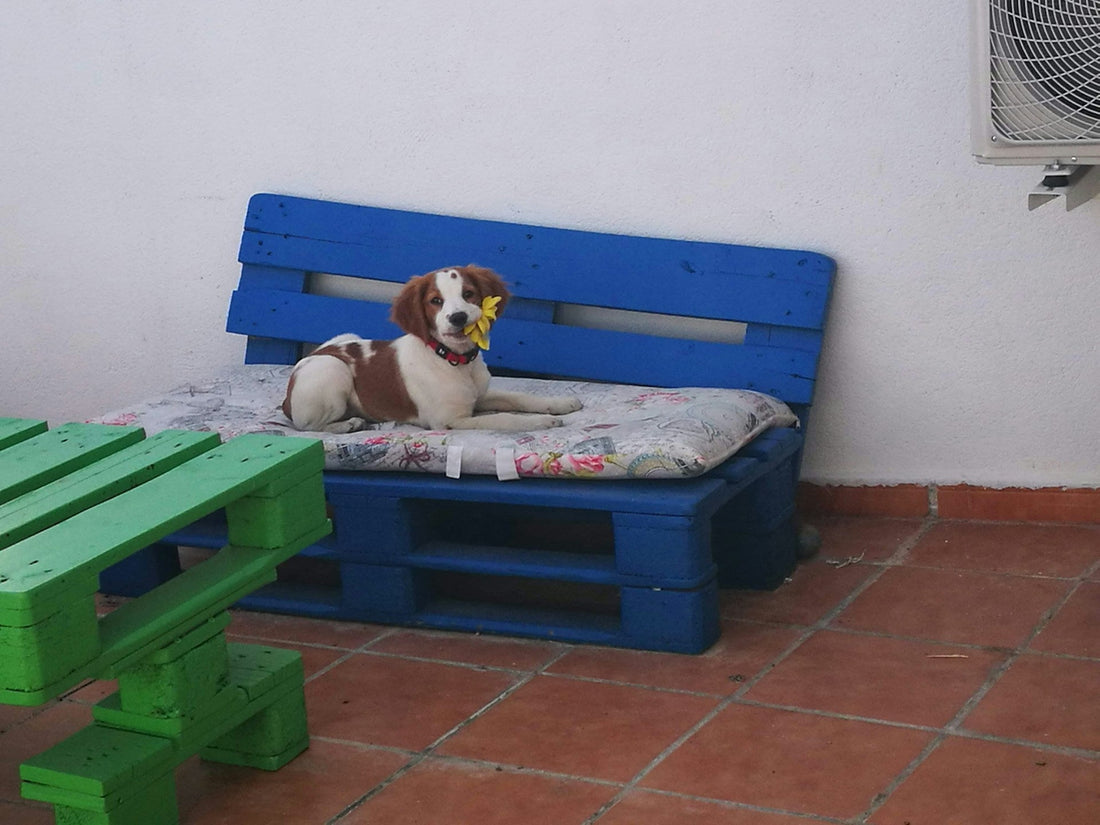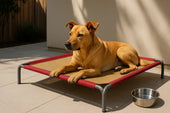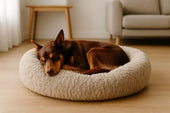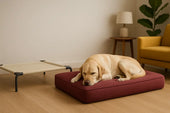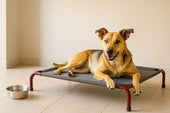Key Takeaways
- Dog beds don’t last forever—on average, they should be replaced every 1 to 3 years depending on use, quality, and hygiene standards.
- Signs it’s time for a new dog bed include visible wear, odours that won’t go away, and loss of support.
- Hygiene, allergy control, and your pet’s comfort are critical reasons for timely replacement.
- Australian conditions like heat, dust, and humidity can shorten bed lifespan compared to cooler regions.
- Investing in high-quality, washable dog beds can extend their life and support your dog’s long-term health.
Introduction
Every dog owner wants their furry companion to live a healthy and comfortable life—and a big part of that is where they sleep. While it’s common to replace collars, toys, and food regularly, many pet owners overlook one essential item: the dog bed. So, how often should you really replace your dog bed? And what’s the actual lifespan of one?
This comprehensive guide explores what affects the longevity of dog beds, how to assess wear and tear, and when it’s genuinely time to invest in a new one. We'll share expert-backed advice, overlooked health considerations, and unique insights to help Australian dog owners make informed decisions.
How Long Does a Dog Bed Typically Last?
General Lifespan Estimates
The average dog bed lasts between 1 to 3 years. However, this can vary depending on:
- Size and breed of your dog
- Type and quality of materials
- Cleaning routine
- Indoor vs. outdoor use
Dr. Alicia McKnight, a Sydney-based veterinary surgeon, notes:
"Most dog beds, especially cheaper polyester ones, tend to degrade quickly under daily use. Orthopaedic or memory foam beds often last longer but should still be assessed yearly."
Factors That Influence Dog Bed Longevity
1. Dog Size and Weight
Heavier breeds like Labradors or German Shepherds place more pressure on bedding, which can wear down foam and fabric faster than smaller breeds.
2. Behavioural Habits
- Digging or nesting dogs can tear fabric quicker.
- Chewers may destroy the bed entirely in a matter of weeks.
3. Material Quality
- Memory foam beds may hold up better than basic cotton-stuffed cushions.
- Canvas and ripstop nylon covers tend to be more durable.
4. Frequency of Washing
Frequent washes—especially in hot water—can break down materials over time. However, beds with removable, machine-washable covers can extend their usability.
5. Australian Climate Impact
Humidity, red dirt, bush dust, and even mites (particularly in Queensland and NT) can accelerate wear and bacterial buildup.
6. Number of Dogs
Multi-dog households mean more wear, more dirt, and shorter replacement timelines.
Hidden Health Hazards in Old Dog Beds
Worn dog beds can harbour bacteria, parasites, mould spores, and allergens that negatively affect your dog’s health.
Common Risks:
- Flea and mite infestation
- Chronic skin irritation
- Respiratory issues from dust/mould
- Orthopaedic decline due to worn-out foam
According to pet dermatologist Dr. Ellie Chan:
“Beds that look clean may still host microscopic allergens that can worsen atopic dermatitis or chronic infections. This is especially true in humid Australian homes.”
How to Know When It's Time to Replace Your Dog Bed
Watch for these signs:
- Lumps or flat spots where padding used to be
- Persistent odour despite cleaning
- Torn or frayed fabric
- Unexplained itching or allergies in your pet
- Your dog refuses to use the bed
Dr. Martin Holloway, a Melbourne-based pet physiotherapist, advises:
"If a bed no longer offers spinal or joint support, especially for ageing pets, it becomes a health risk rather than a comfort."
How to Extend the Life of Your Dog’s Bed
Maintenance Tips:
- Wash the cover weekly, and the inner cushion monthly
- Use a waterproof liner
- Rotate the bed’s position to distribute wear
- Vacuum frequently to remove hair and dust mites
Smart Shopping Tips:
- Look for double-stitched seams
- Choose machine-washable covers
- Opt for brands that offer replacement parts
Investing in Quality:
Australian-made beds like Snooza and Superior Pet Goods often outlast cheaper imports due to higher construction standards.
Choosing the Right Replacement: What to Look For
When it’s time to replace a bed, consider:
- Orthopaedic features for senior dogs
- Cooling gel inserts for hot climates
- Anti-chew guarantees if your dog is destructive
- Hypoallergenic materials for allergy-prone dogs
Many vets recommend raised beds in Australia’s warmer regions to promote airflow and prevent overheating.
Historical Insight: How Dog Beds Have Evolved
Early domestic dogs often slept on hay or rugs. The modern dog bed didn’t emerge until the mid-20th century. Over the last few decades, beds have evolved with memory foam tech, thermal regulation, and stylish designs.
Statistically, Australians spend over $3 billion annually on pet products, and dog bedding is one of the fastest-growing segments (IBISWorld, 2023).
Expert Commentary: What the Industry Says
Pet product designer Angela Birch from Melbourne explains:
“We’ve seen a massive demand for sustainable, long-lasting materials. Hemp-blend beds and recycled fill beds are a big part of the future.”
Vet nurse Jason Lim adds:
“Pet owners often keep beds far too long. Annual assessment, just like checking collars or flea meds, should be routine.”
Final Thoughts: Don’t Wait Until It’s Too Late
Just like humans replace mattresses to maintain sleep quality, dogs need proper support for good health. If your dog’s bed is older than 2 years, start inspecting it regularly—even if it looks fine on the outside.
A comfortable, hygienic, and structurally sound dog bed isn’t a luxury—it’s essential care.
Frequently Asked Questions
How often should I wash my dog’s bed?
At least once a week for the cover and once a month for the insert. More frequently if your dog has allergies or skin issues.
What’s the average lifespan of a high-quality dog bed?
1.5 to 3 years with moderate use and proper care.
Should I buy a new bed if my dog has been sick?
Yes, particularly after parasitic or fungal infections to prevent reinfestation.
Are raised dog beds better for durability?
Yes. Raised beds often last longer, especially in outdoor settings.
Can a poor-quality bed cause health issues?
Absolutely. Poor spinal support can lead to joint pain, arthritis, and behavioural changes due to discomfort.
Are expensive beds worth it?
Generally, yes. The up-front cost is often justified by longevity, washability, and health benefits.
Free shipping Australia-wide on our premium range of dog beds — because your dog deserves better sleep today. 🐾

